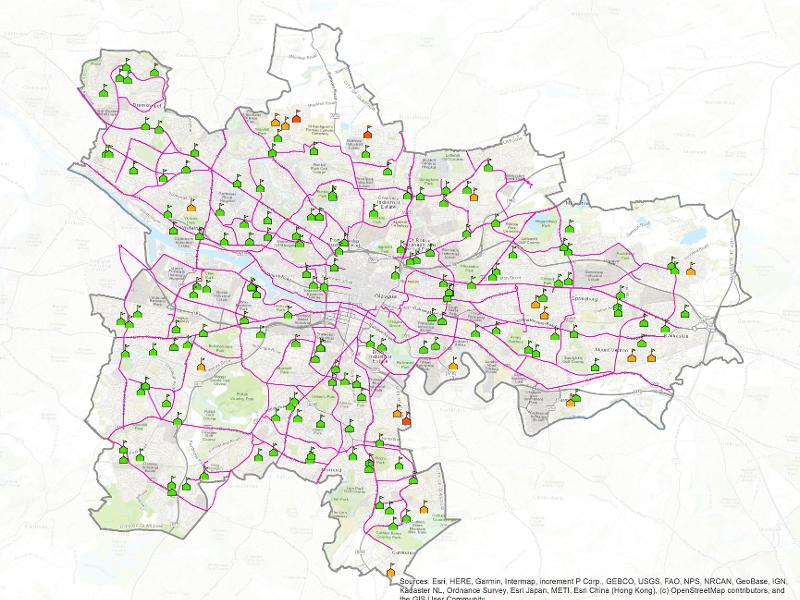- Glasgow City Council
- > News Archive
- > News Archive 2022
- > New Active Travel Strategy Could Provide a £1.8 Billion Benefit For Glasgow
New Active Travel Strategy Could Provide a £1.8 Billion Benefit For Glasgow

The new active travel network of cycle lanes and footpaths proposed for Glasgow could provide a £1.843 billion benefit for the city.
Plans to build 270km of active travel infrastructure to ensure safe walking, wheeling and cycling throughout the whole city were unveiled in October last year. The proposed network would add to existing safe and segregated routes in Glasgow and allow anyone who cycles to reach most of the city within 30 minutes by bike.
It is estimated that the new infrastructure could cost up to £475m to build over the next ten years. But in a report presented at the council's Environment, Sustainability and Carbon Reduction Policy on February 1, an analysis by an independent consultant found the network could support a wide range of environmental, economic, health, road safety and community benefits for the city.
The analysis has been used to form a strategic business for the active travel plan, which amounts to a £1.843bn gain for Glasgow over the next ten years. Considered to provide a high cost/benefit ratio when compared to the estimated construction costs, the £1.843bn figure was also found likely to increase over time as accident rates dropped as active travel becomes safer.
Councillor Anna Richardson, City Convener for Sustainability and Carbon Reduction, believes the strategic business case adds further impetus to the drive to a create a city network for active travel that would form part of Glasgow's fight against climate change.
Councillor Richardson said: "Our active travel plan is a key part of our effort to decarbonise the Glasgow's transport network. Almost 30% of vehicle journeys in Glasgow are less than 1km and so there is significant potential to reduce the carbon emissions created during those short trips.
"By creating a network of safe and segregated active travel infrastructure, we want to see walking, wheeling and cycling become the first choice for everyday journeys all across the city. Encouraging a shift to active travel will reduce the carbon impact of how we get about Glasgow, but it will also help to improve the overall health and well-being of our citizens.
"The strategic business case clearly recognises the many other positive differences a city network for active travel can have for Glasgow. Improved air quality, less congestion on our roads, increased footfall on local high streets, less strain on our health services and greater use of city streets as places for play and socialising are all identified as possibilities that flow from the creation of a city network.
"The fact a figure as large as £1.8 billion can be attributed to the changes that would come from building a city network is remarkable. But the real prize is the huge potential for improving the quality of life in communities all across the city that could be built upon on a city network for active travel."
Further work on the strategic business case is expected to be undertaken alongside the development of a detailed plan to deliver the network that is due to be produced by this summer.
However, it is intended that the design of the network will draw upon lessons learned in Glasgow but also from best practice found in other European cities such as Paris, Copenhagen and Seville where significant active travel infrastructure is already in place.
An early ambition for the delivery plan is that targeted construction of the network will ensure half of Glasgow's schools will be within 400 metres of safe, segregated infrastructure The ultimate aim is for all city schools to be easily accessible from the network to encourage higher levels of active travel among the city's young people (see graphic).
A recent consultation on the active travel plan found that 70% of respondents would use the proposed infrastructure for their everyday journeys. The strategic business case was developed using standard modelling tools that are adopted by the Department for Transport and Transport Scotland.
Following discussion by councillors at the Environment, Sustainability and Carbon Reduction Policy Committee, Glasgow's Active Travel Strategy 2022-31 has been referred to the council's City Administration Committee for final approval.
Full details of the active travel strategy can be accessed through this link.





